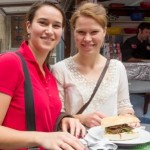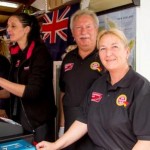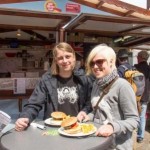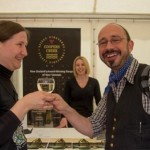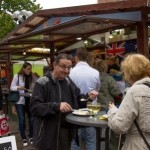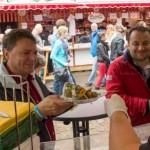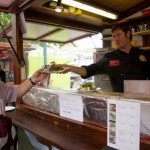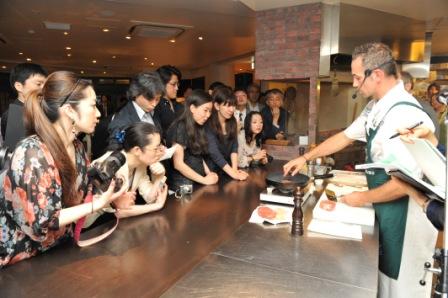New Zealand lamb and venison were in such hot demand at Northern Europe’s biggest summer festival, the organisers had to get in extra chefs to satisfy the hungry queues.
Beef + Lamb New Zealand and Deer Industry New Zealand were invited to take part in this year’s Kieler Woche celebrations – the first time in the festival’s 130-year history New Zealand has been represented at the international market.
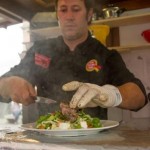
Cristian Hossack, seen here plating up for Kiel Woche, is the former head chef at Peter Gordon’s Providores restaurant in London. He is returning to New Zealand.
The market in Kiel’s picturesque main square is at the hub of more than 2,000 sports and cultural events which attract around three million visitors annually to a city with a population not much bigger than Hamilton’s.
Working 16 hours a day for 10 days, the Kiwi culinary team led by Marton-born chef Cristian Hossack (pictured right) served 7,000 lamb burgers, venison wraps and lamb salads, complemented by wines from Hawke’s Bay vineyard Coopers Creek.
Nick Beeby, B+LNZ Ltd manager for emerging markets and strategic projects, says it was great to be working alongside a chef of Cristian’s stature. A food critic who ‘mystery dined’ the festival rated the New Zealand offering top for food, service and value for money, stating “it was like eating at a restaurant.”
“It’s hardly surprising the food was so popular or received the plaudits it did,” Beeby says. “With a top chef and top produce, you can’t go wrong. But it’s even more impressive when you realise the chefs were juggling questions as well as pans.
“There was a constant queue of festival-goers lined up not only to taste our lamb and venison, but to find out more about its production, how to cook it and where to buy it; asking questions about everything from knife sharpening to sustainable farming practices. People loved it and we’ll definitely be going back again.”
The joint venture aimed to raise awareness of New Zealand lamb and venison in Germany, where consumers do not traditionally eat much of either.
Innes Moffat, venison marketing services manager at DINZ says the novelty was a bonus. B+LNZ and DINZ both run comprehensive marketing programmes in Germany. However the Kiwi presence at the festival for the first time generated lots of media interest and free publicity on television and radio, and in the press.
B+LNZ and DINZ attended in conjunction with a major Northern European retailer which sells New Zealand lamb and venison 12 months of the year – so festival-goers knew where to go to get it.
The two organisations will come together again in August for a three-day festival in Frankfurt, where around 40,000 visitors are expected through the New Zealand pavilion.
Photos below are courtesy of B+LNZ Ltd.


